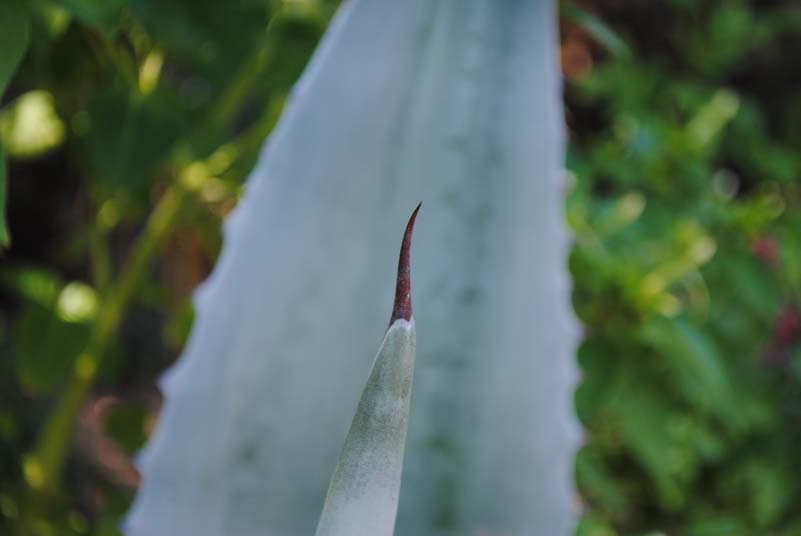 There’s something alluring about beautiful plants that have a bite to them.
There’s something alluring about beautiful plants that have a bite to them.
While I don’t go out of my way to design gardens that will intentionally impale or poison people, I also don’t go out of my way to avoid plants that might have potential for pain.
Just like lots of people I know, sometimes the most fascinating characters have a prickly side to them. All you have to do is pay attention to the warning signs, and adjust your behavior when you think things might get a little dicey.
Please join me and the rest of the us at the Garden Designers Roundtable to discuss this month’s topic: Danger Gardens.
If you were to look at my portfolio, you’d see that my gardens typically consist of blend of California natives, grasses, perennials, and succulents. Dig a little deeper, though, and you’ll see that woven throughout are plants that can hurt.
It’s not because I’m a sadistic designer, but because 1) plants with thorns and poison will keep our ravenous deer away, and 2) these plants have such awesome characteristics that it’s worth overlooking their edgier side.
I like to call them my Formidable Four.![]()
1. Bougainvillea
What I see What others see
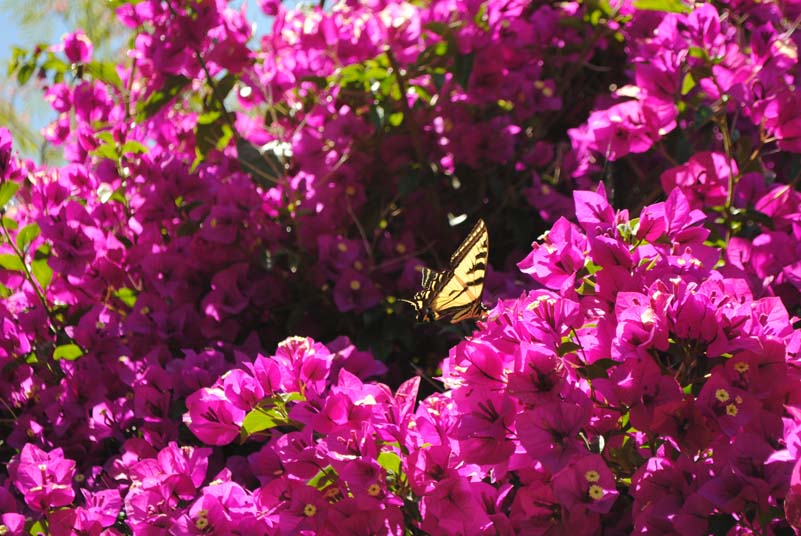
![]()

Yes, it’s true that bougainvilleas have thorns that could pierce armor.
But the flowers!! Surely you can forgive this plant a few thorns for flowers that bloom for no less than 6 months at a time here in the temperate Bay Area.
So how can you use them in the landscape?
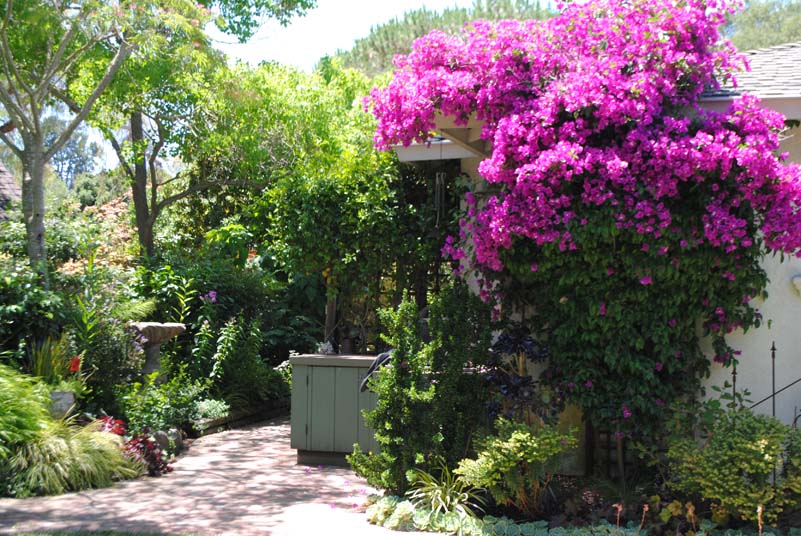 Bougainvilleas are perfect for scrambling up a trellis, seductively draping over rooftops, fences and any other structure that could use a little softening.
Bougainvilleas are perfect for scrambling up a trellis, seductively draping over rooftops, fences and any other structure that could use a little softening.
This is ‘Purple Queen’ in my own garden where it grows in a narrow 2-foot wide bed.
To avoid unwanted wounds when walking by, I keep it tightly pruned while growing up the trellis. I then let it flare out and do its thing the closer it gets to the roof.
An added bonus is that it also softens the corner of my house, taking the eye off my less-than-gorgeous built in barbecue.![]()
2. Pyracantha
What I see What others see
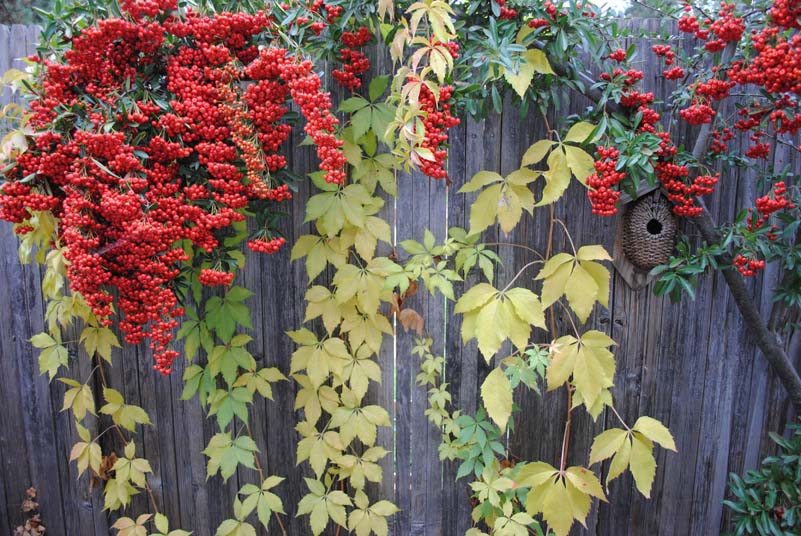
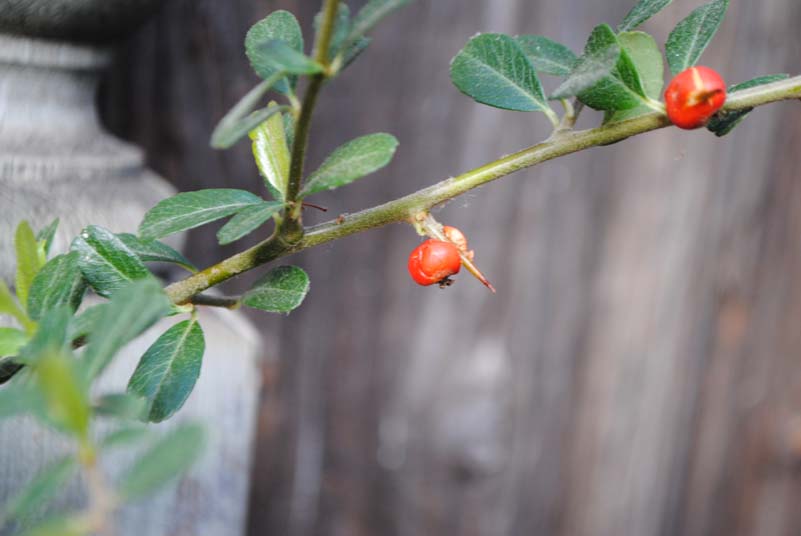
![]()
Like the bougainvillea above, the pyracantha has its fair share of skin-puncturing thorns.
In fact, I have one friend who confided that the yearly pruning of her pyracantha bush is the cause of a guaranteed spousal argument.
So how can you use them in the landscape?
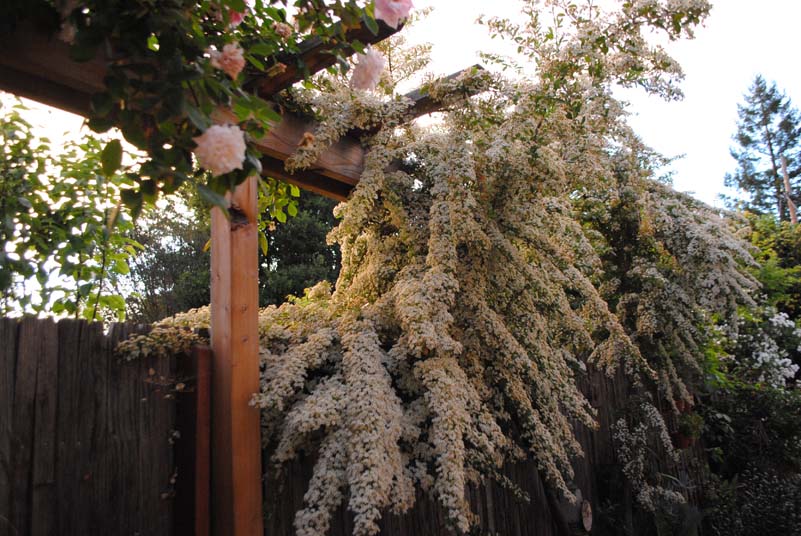 Let’s not forget that besides their gorgeous fall berries (in colors of garnet, red, or orange) the pyracantha shrub is covered in tiny white flowers in the early spring.
Let’s not forget that besides their gorgeous fall berries (in colors of garnet, red, or orange) the pyracantha shrub is covered in tiny white flowers in the early spring.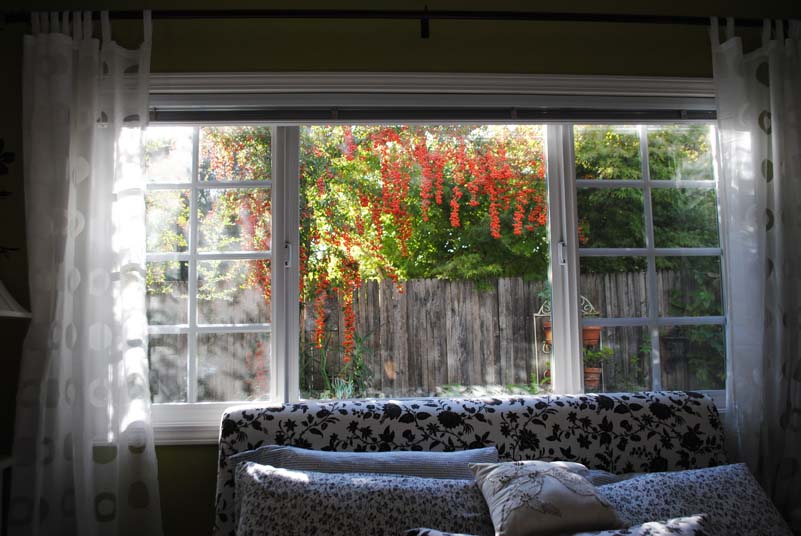
What a show this old shrub of mine puts on for my daughter!
For years, she’s enjoyed lying in the comfort of her bed while watching robins, waxwings, and colorful finches gorge themselves on berries.![]()
3. Agaves
What I see What others see
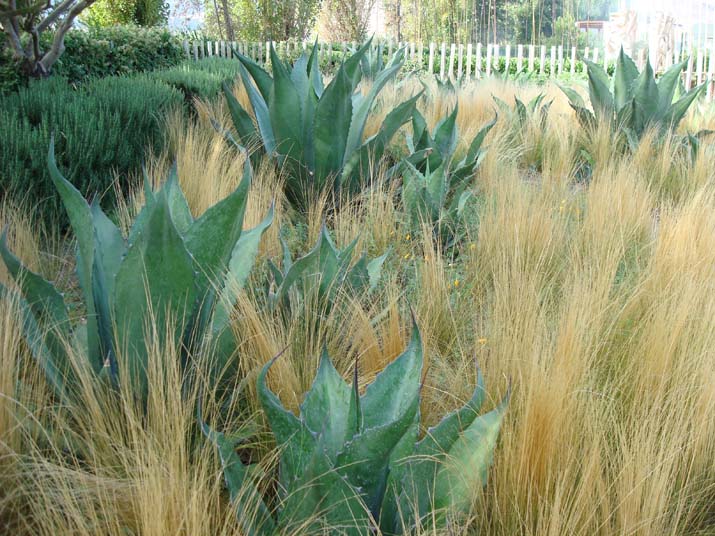
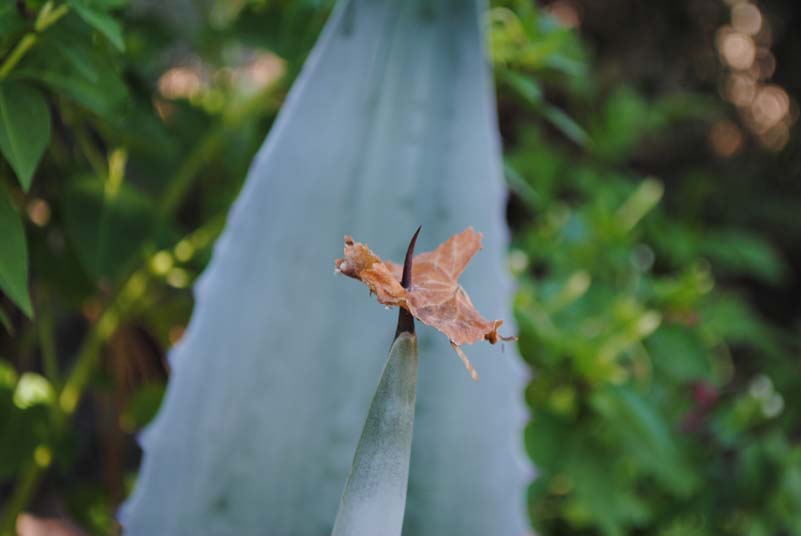
![]()
Okay, so these are actually pretty dangerous.
And they pup like crazy, soon creeping into your neighbor’s garden or pushing up through the asphalt.
These beauties definitely need to be carefully sited in the landscape, as well as carefully tended to make sure they stay within bounds. But with their stunning colors and year-round structure they provide, aren’t they worth the trouble? I think so.
So how can you use them in the landscape?
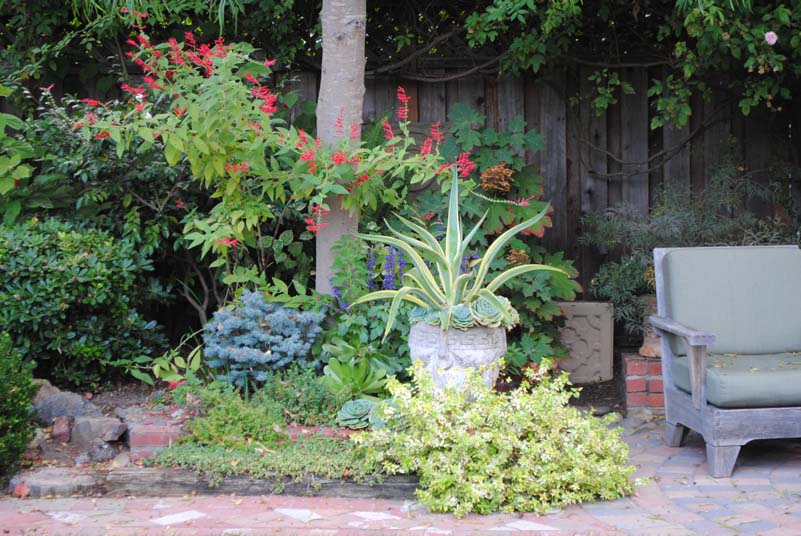
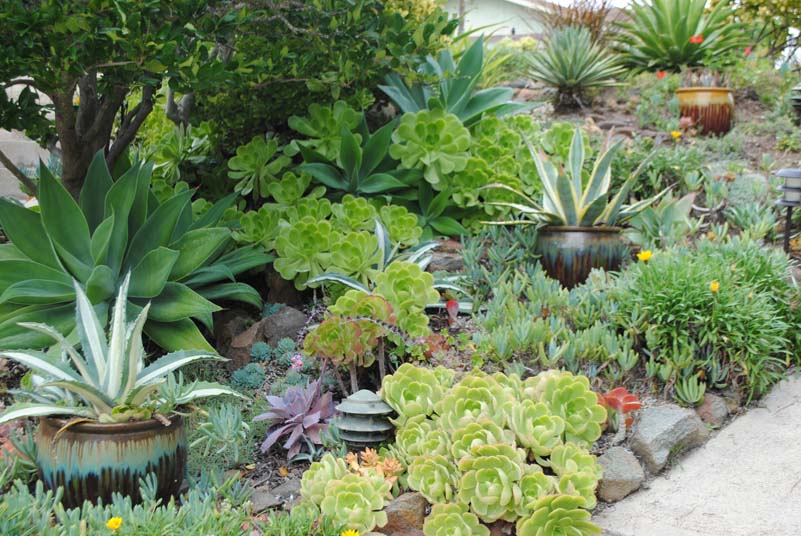
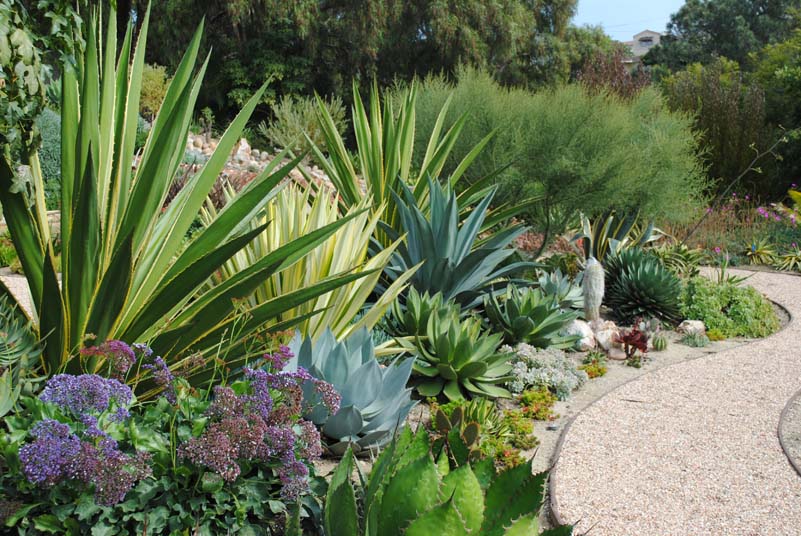
This garden, designed by Frank Mitzel and Randy Laurie, perfectly demonstrates the careful thought given not only to their placement but to neighboring plants as well.![]()
4. Euphorbia
What I see What others see
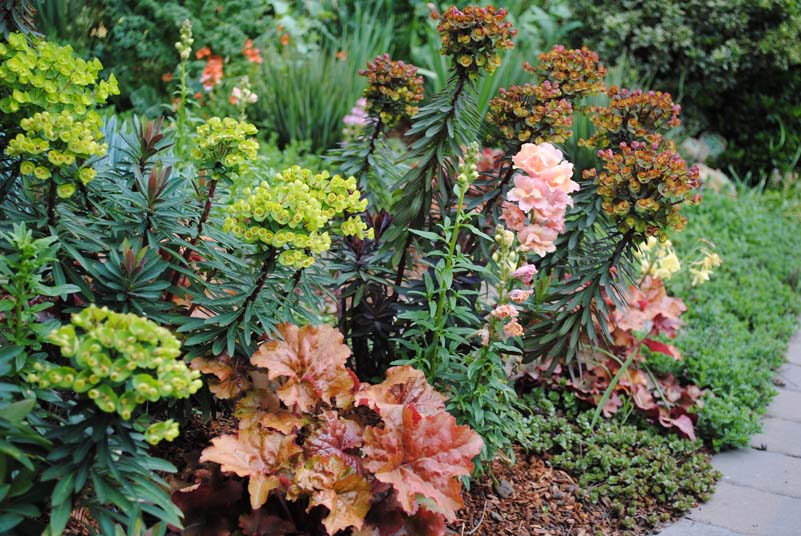
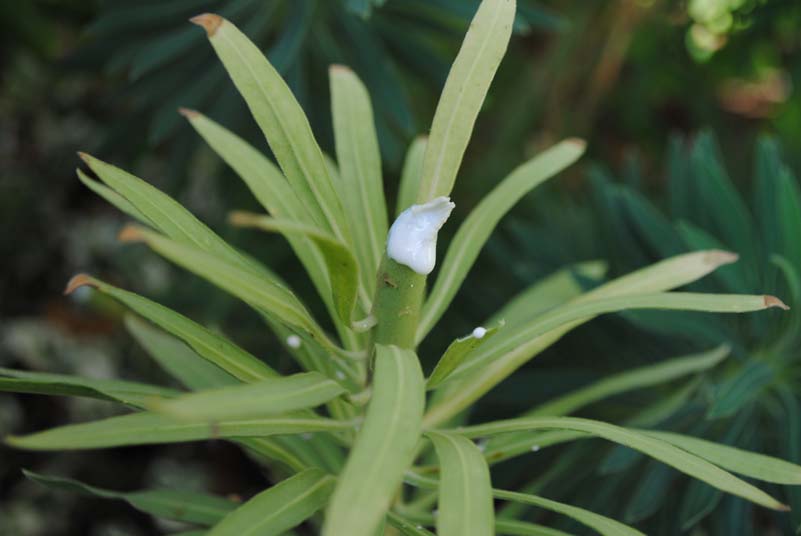
![]()
Available in a rainbow of colors, shapes and sizes, euphorbias have a highly irritating sap that runs throughout their stems.
While some people aren’t bothered by this sap, many are – resulting in painful blisters and rashes, and even blindness.
These beauties are the epitome of hidden danger!![]()
So how can you use them in the landscape?
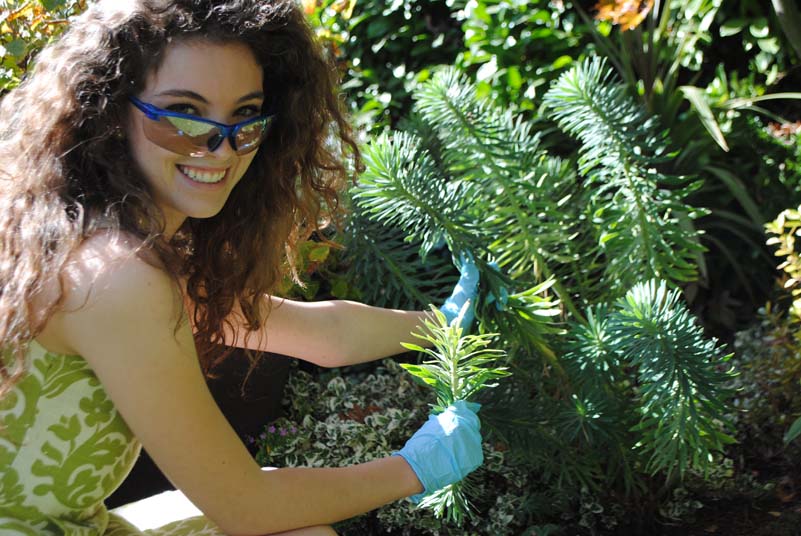
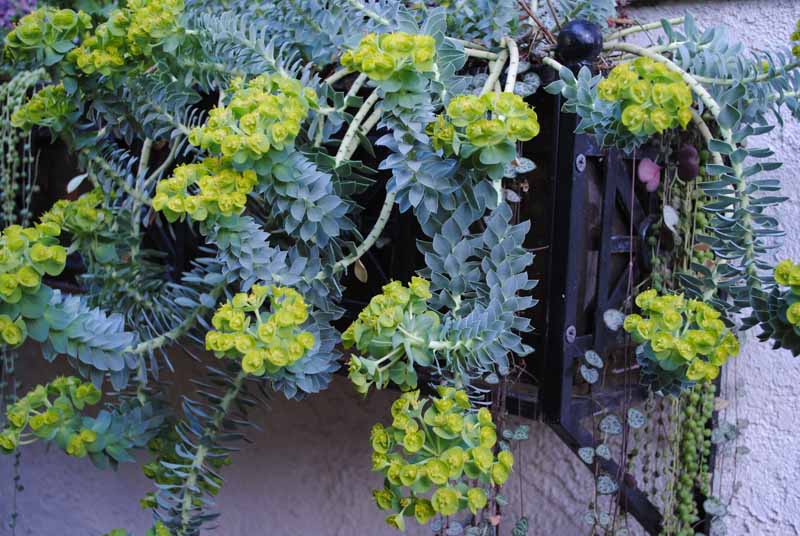
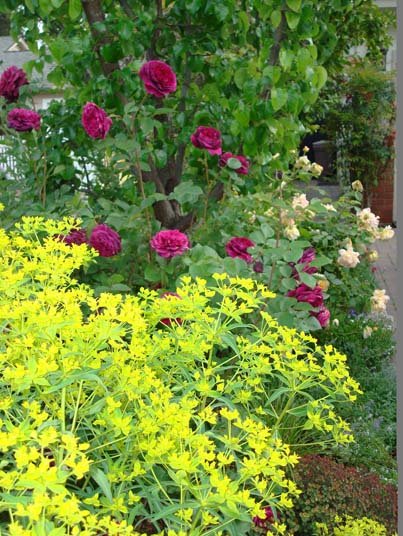






37 Comments
Absolutely lovely photos. You are definitely a gardener after my heart as I have a couple dozen Bougainvilleas and dozens of agaves. The thorns are a plus for me as I consider them a security measure!
Donkey Tail (Euphorbia) as we call it is especially bad. After seeing what happened when my sister got it in her eye I removed it from my garden. Not worth the hassel for me.
Yours is the only blog I come across mention of Euphorb ceratocarpa. I’ve got two young plants with nonbranching trunks about 4 feet tall, so I’m very interested in your comment about cutting them to the ground. Think I’ll try that with one of them. Love the Mitzel/Laurie garden!
Hi Denise! I don’t know WHY this euphorbia is so hard to find (in my area, at least) but it drives me crazy! It’s truly my very favorite large-sized euphorbia of all, and one of the longest lasting. I have several in my garden that are at least 10 years old with no signs of fading. I’ve learned that if you cut them back HARD (within 6-8″ of the ground) they come back fuller and more beautiful than ever, topping out at about 5-feet. I’ve had a few seedlings over the years and they do tend to grow leggy at first, similar to yours I suspect. I would cut them back by 2/3 to encourage branching. Also, do you have them in the full sun? The ones that I have in partial shade aren’t as robust, though they still bloom like mad and grow to about 3-feet.
Thanks, Rebecca — I’ll try that cutback technique with the now 4-foot seedling that popped up in the front garden. The original plant was a wide, branching shrub, so these leggy, telephone pole seedlings are a bit mystifying. The other plant is a cutting from the mother plant — that’s growing in the same leggy fashion as the seedling. Maybe this euphorbia is just too confusing? 😉
I ,too, have euphorbias and aloes and agaves and bougainvilleas and roses – all of the spiny wonders! I refer to my garden as “the hostile garden”. It’s more of a “look but don’t touch” experience. I love it all.
High-fiving you, Rita! A garden after my own heart!
You’re right about the roses. They have thorns, and why do some people shy away from agaves for their thorns but not roses for theirs? Agaves are seriously misunderstood! (And perhaps slightly more lethal than rose thorns, just slightly!) Great tip about growing agaves in pots to contain their pupping. There are also a number of solitary agaves that are beautiful too, including my fave, Agave ovatifolia.
You’re right about the solitary agaves, Pam – I had forgotten about them! Just looked at the a. ovatifolia and love it!!! Plus, it’s a nice size, too 3×3. Thx for the tip!
Rebeca, I love your presentation! I also love that your daughter looks out to see the birds outside her window. And yes, we all have dangerous plants–in one way or another–but gardeners love a little danger! Thank you for such a good perspective!
Thanks, Linda. We have definitely spent years and years enjoying watching the birds gorge themselves on berries from the comfort of a snuggly bed. Glad you liked my post!
Rebecca, Your fab (or fordimable) four are all great choices. That photo of the pyracantha outside your daughter’s bedroom is wonderful. What a treat to be able to lay in bed and get such an amazing show.
Thanks, Debbie – so glad you liked my fab formidable four!!
Very well-organized – wish’t I did that. Especially the “what I see, what they see” comparison – I thought that very thing about the bougainvilleas at a colleague’s house this weekend. The model pruning – such a diva! The agave shots…almost brought tears to my eyes, but I think I’ll be inspired, instead.
Thanks David. I think we could all write a post about ‘What they see…What I see’, don’t you? As designers we tend to see things so differently. Glad you enjoyed my post today.
I worked on the Cornerstone project you pictured under your Agave heading while I was with the firm OvS. It’s a great little garden. Loved this post!
Wow, Thomas, I’m impressed! This is truly one of my favorite gardens ever and photograph it over and over again throughout the year. I was just there last week and noticed the new metal orb placed in it, adding a whole new dimension. Thanks so much for stopping by!
Agaves and Euphorbias… you certainly know how to make my heart sing, Rebecca! The bold beauty of an agave never fails to make a statement, and even though euphorbia sap is annoying, the plants make up for it with their unique beauty. My 4 year old grandson learned early on to look first before touching any of Gram’s plants, smart kid.!
Careful of Gram’s plants – you make me laugh, Sheila. Have you tried the e. ceratocarpa? It’s my favorite one for a larger space – the flowers stay on for months and months at a time, and it has a super short down time once its pruned.
Your pics of agaves are just stunning. I want one! I wish they grew here. I may just need to try one in a big pot next year…
Thanks, Mary! The smaller varieties do so well in containers, they’re definitely worth the hassle of hauling in and out of the garden.
I love using prickly plants in the landscape. It adds a texture and allure. Especially Agave’s.
Amen, Rama!
When I saw the photos of bougainvillea, I also thought of Erythrina x bidwillii (coral bean) because here, bougainvaillea never get very large. Coral bean does, and it also has those fantastic thorns. I see only flowers myself.
Where did you take the photo of the grasses with agaves? I think that is one of the best photos of two contrasting textures ever. I grow my lovely agaves in pots throughout the landscape because I must bring them in. That reminds me, we’re getting another huge cold front Thursday. Where is my dolly? Those pots full of cactus soil are heavy. I so enjoyed this Rebecca.~~Dee
I don’t think I’ve ever seen a Coral bean in person, Dee, isn’t that sad? I guess that means I need to come out and visit! Aren’t those agaves TO DIE FOR? That garden is one of several in a public garden called Cornerstone in Sonoma, designed by the team at Oehme,Van Sweden & Assoc. You’d love this place.
There were several plants of coral bean in Tucson, but you would never have noticed them because they were blooming. I wonder why. Mine is still blooming in spite of everything. Thanks for the tip about the garden. Yes, they are to die for!
I have always had a soft spot in my heart for Bougainvillea. I thought it was simply because the gorgeous flowers reminded me of wonderful times spent visiting my brother in Phoenix (who grows the most beautiful Bougainvillea effortlessly). All this time I never realized they had thorns, now it all makes perfect sense, of course I would be attracted to them!
I love your double take on the featured plants, and those Agave-in-the-landscape shots..WOW! Gorgeous!
Hi Loree – it’s clear you’re undoubtedly attracted to the thornier side of life. Even when you don’t mean to – ha! I’ve seen thorns on my bougainvilla that are no less than two inches long – absolute weapons. So next time you see a lush bougainvilla be warned – don’t walk along running your hand through it or you’ll pay the price!
Wonderful examples here (I love pyracanatha, too), Rebecca. I like your attitude of acceptance and adaptation. After all, plants aren’t “bad” they’re just misunderstood…!
That’s so true, Jocelyn – they’re so misunderstood! 😉
Rebecca… I love your choices and as always your witty delight is so entertaining. PS, I too was thinking a danger garden for Rebecca would be a garden full of freshly pruned euphorbia.
Ha – you should see my garden after a good euphorbia pruning! Toxic white sap drops all OVER the place, just waiting to inflict pain on someone’s tender skin. It’s next to impossible to contain the sap (that oozes at the speed of light, it seems) but I try my best, pruning away with a paper bag strategically placed right next to the stems. sigh. The things we do for love, right?